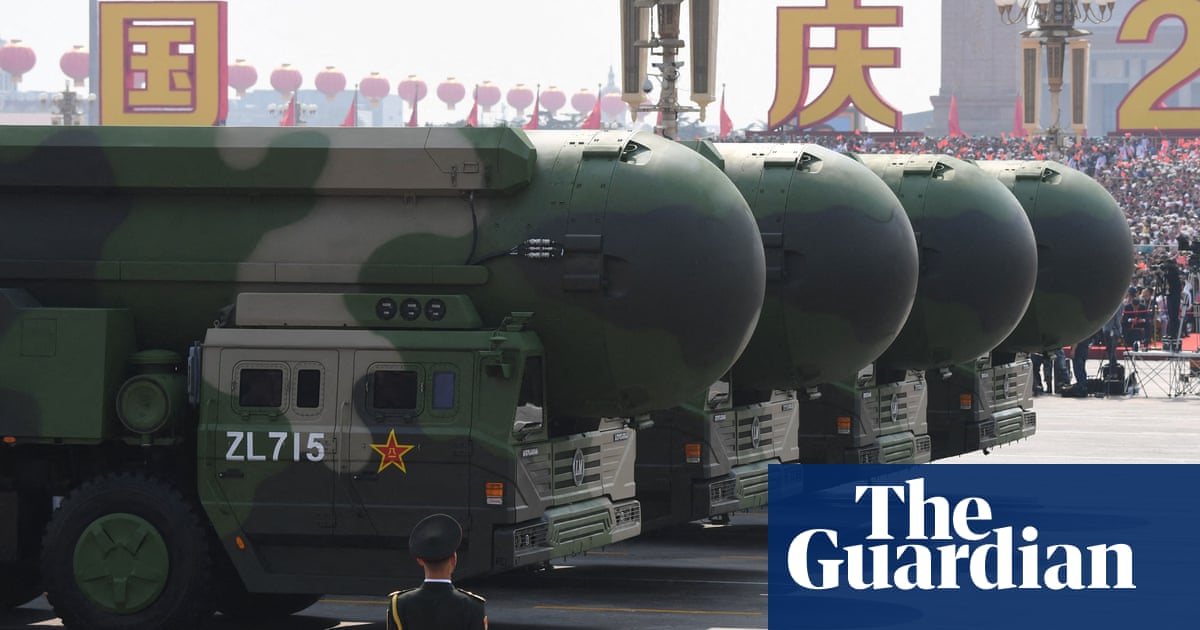China has publicly acknowledged for the first time that it successfully launched an intercontinental ballistic missile into the Pacific Ocean, in a move likely to raise international concerns about the country’s nuclear buildup.
The ICBM, carrying a dummy warhead, was launched by the People’s Liberation Army Rocket Force at 8:44am Beijing time on Wednesday and “fell into expected sea areas,” the Chinese defence ministry said in a statement, adding it was a “routine arrangement in our annual training plan” and not directed at any country or target.
China “informed the countries concerned in advance,” according to a separate Xinhua report, which did not clarify the path of the missile or where exactly in the “high seas of the Pacific Ocean” it fell.
The launch “effectively tested the performance of weapons and equipment and the training level of the troops, and achieved the expected goal,” Xinhua reported.
An analyst told AFP that China has typically conducted such tests in its own airspace.
“This is extremely unusual and likely the first time in decades that we’ve seen a test like this,” Ankit Panda, Stanton Senior Fellow at the Carnegie Endowment for International Peace, said.
“(The test) likely speaks to China’s ongoing nuclear modernisation manifesting in new requirements for testing,” he added.
The PLA Rocket Force, which oversees the country’s conventional and nuclear missiles, has been tasked with modernising China’s nuclear forces to deter developments such as improved US missile defences, better surveillance capabilities, and strengthened alliances.
Some analysts, however, argue the speed of China’s nuclear buildup goes beyond a credible minimum deterrence.
Beijing says it adheres to a “no first use” policy.
The Chinese military has emphasised that the central military commission, headed by President Xi Jinping, is the only nuclear command authority.
China, which has been frequently criticised by the US for the opacity of its nuclear buildup, scrapped nuclear talks with Washington in July over US arms sales to Taiwan.
China has more than 500 operational nuclear warheads in its arsenal, of which approximately 350 are ICBMs, and will probably have over 1,000 warheads by 2030, the Pentagon estimated last year. China’s military is constructing hundreds of secret silos for land-based ICBMs, the Pentagon said in the report.
That compares to 1,770 and 1,710 operational warheads deployed by the US and Russia, respectively. The Pentagon said that by 2030, much of Beijing’s weapons will probably be held at higher readiness levels.
The launch comes as democratically governed Taiwan, which China claims as its own territory, has complained of increased Chinese military activities around the island in the past five years.
Taiwan’s defence ministry said on Wednesday it had detected 23 Chinese military aircraft, including J-16 fighters and drones, operating around Taiwan carrying out long-range missions to the south-east and east of the island.
The ministry added it had also recently detected “intensive” Chinese missile firing and other drills, though it did not give details of where that took place.
Taiwan has dispatched its own air and naval forces to keep watch, the ministry said.

